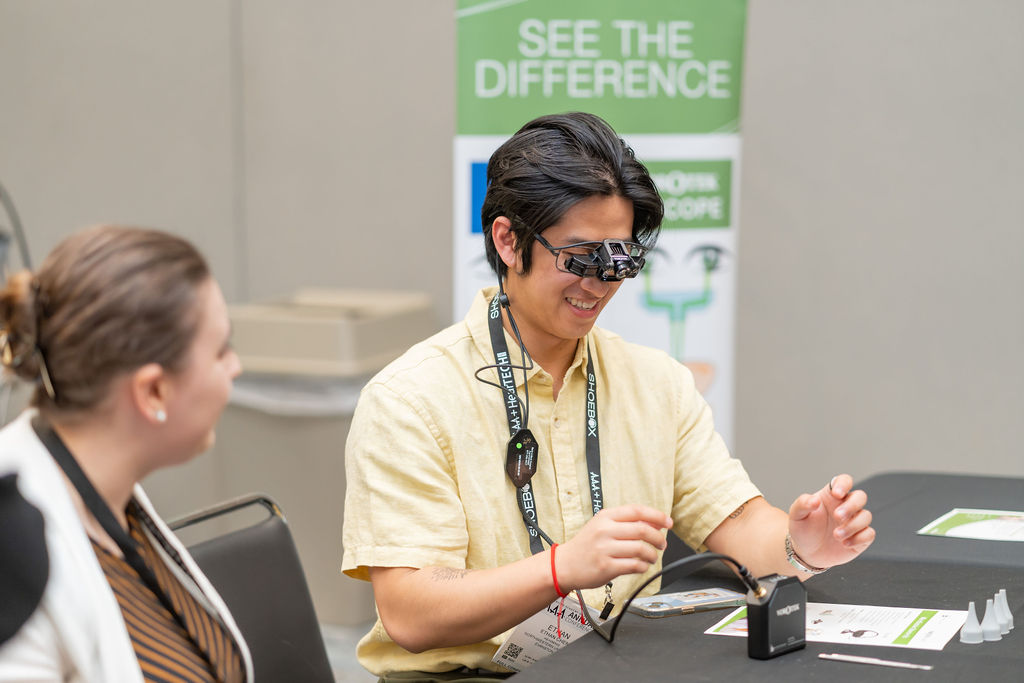Could the hormonal changes associated with menopause affect a woman’s ability to process auditory information?
Trott et al (2019) compared performance on tests of central auditory function between 14 pre-menopausal women (mean age = 30 years) and 14 peri- or post-menopausal women (mean age = 54 years). All subject had pure-tone hearing thresholds of 25 dB HL or better at 500, 1000, 2000, and 4000 Hz in both of the ears.
Subjects completed the following behavioral central auditory processing (CAP) tests: the Dichotic Digits Test (Musiek, 1983), the Duration Patterns Test (Musiek et al, 1990), the Listening in Spatialized Noise Test – Sentences (LiSN-S) test (Cameron and Dillon, 2007), and the Speech Perception in Noise—Revised Test (Bilger et al, 1984). Trott and colleagues also collected auditory brainstem response (ABR) and middle-latency-response (MLR) measures on these subjects.
Statistical analyses revealed significant differences between the subject groups on the LiSN-S test (low-cue SRT, high-cue SRT and overall), the ABR (wave III latency in the left ear and rate effects for wave V latency bilaterally), and the MLR (Pa amplitude on the right side). The peri-/post-menopausal group performed more poorly on the LiSN-S and had longer ABR wave V latencies with an increased rate of stimulation 23.3 clicks/sec versus 77.7 clicks/sec). The authors believed that the other statistically significant different electrophysiological measures between subject groups, which were unilateral, were due to the small number of subjects.
According to the authors, these data suggest that post-menopausal women with auditory complaints whose peripheral hearing is within normal limits should be evaluated for potential central auditory processing deficits.
References
Bilger R, Nuetzel J, Rabinotwit W, Rzeczkowski C. (1984) Standardization of a test of speech perception in noise. J Speech Hear Res 27:32–48.
Cameron S, Dillon H. (2007) Development of the listening in spatialized noise-sentence test (LISN-S). Ear Hear 28:196–211.
Musiek F. (1983) Assessment of central auditory dysfunction: the dichotic digits test revisited. Ear Hear 4:79–83.
Musiek F, Baran J, Pinheiro M. (1990) Duration pattern recognition in normal subjects and participants with cerebral and cochlear lesions. Audiology 29:3014–313.
Trott S, Cline T, Weihing J, Beshear D, Bush M, Shinn J. (2019) Hormones and hearing: central auditory processing in women. J Am Acad Audiol 30(6):493–201.
Recent Posts
Turn Insight Into Action! Attend Learning Labs at AAA 2026
Ready to take your professional development to the next level? At AAA 2026, Learning Labs are your chance to go beyond lectures and dive into…
Your Support Makes the Difference—Let’s Finish the Year Strong
As we wrap up the year, I want to thank you for your generosity supporting the AAA Foundation’s work. The enclosed report highlights what you…
Audiology Faces New Challenges Under Draft Federal Loan Rule: What Comes Next
Member Action Needed Soon! The U.S. Department of Education’s Advisory Committee has reached consensus on proposed regulations implementing the higher education provisions of the One…


